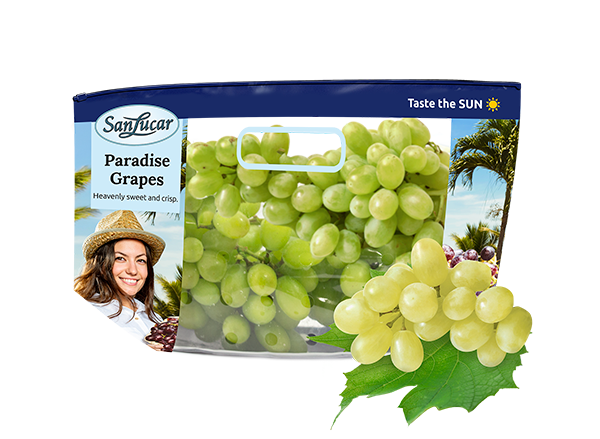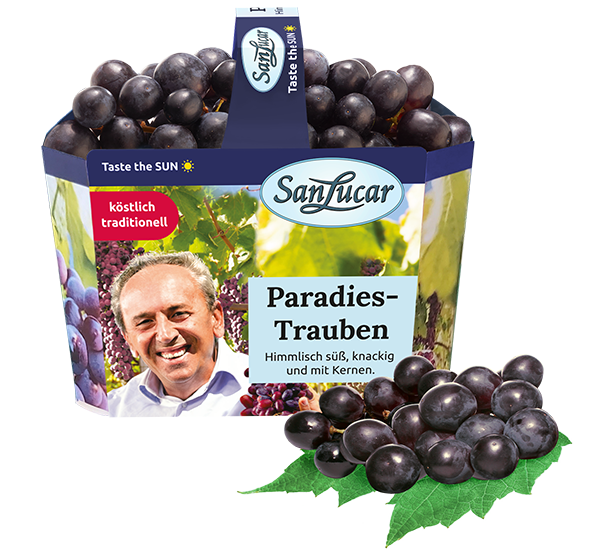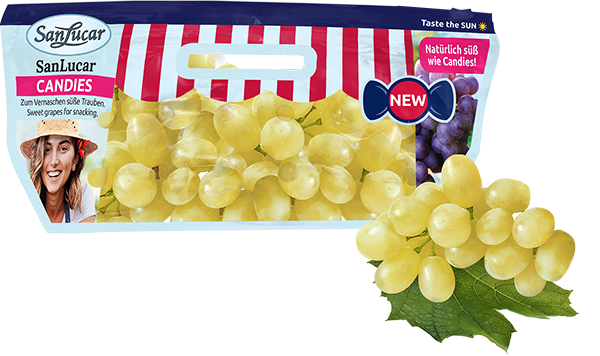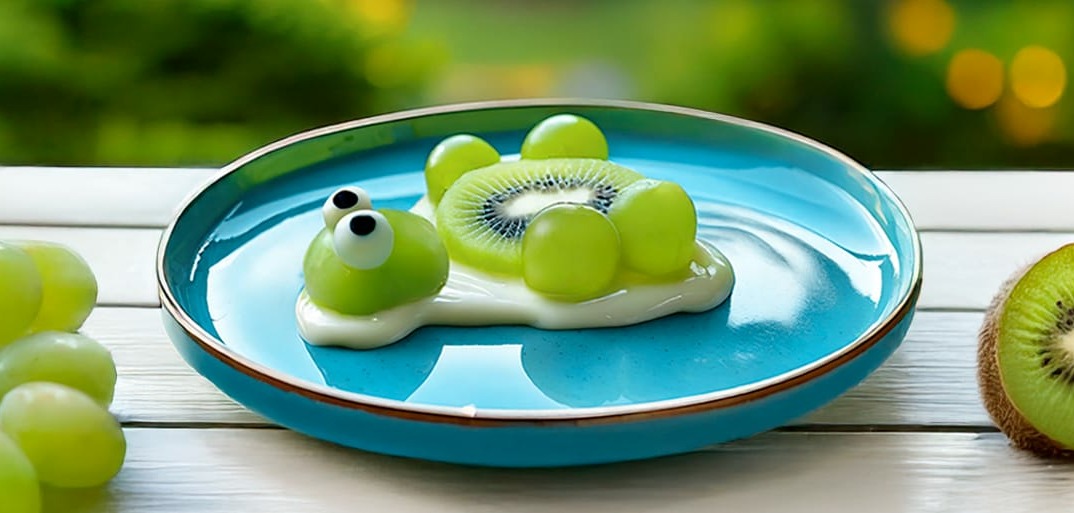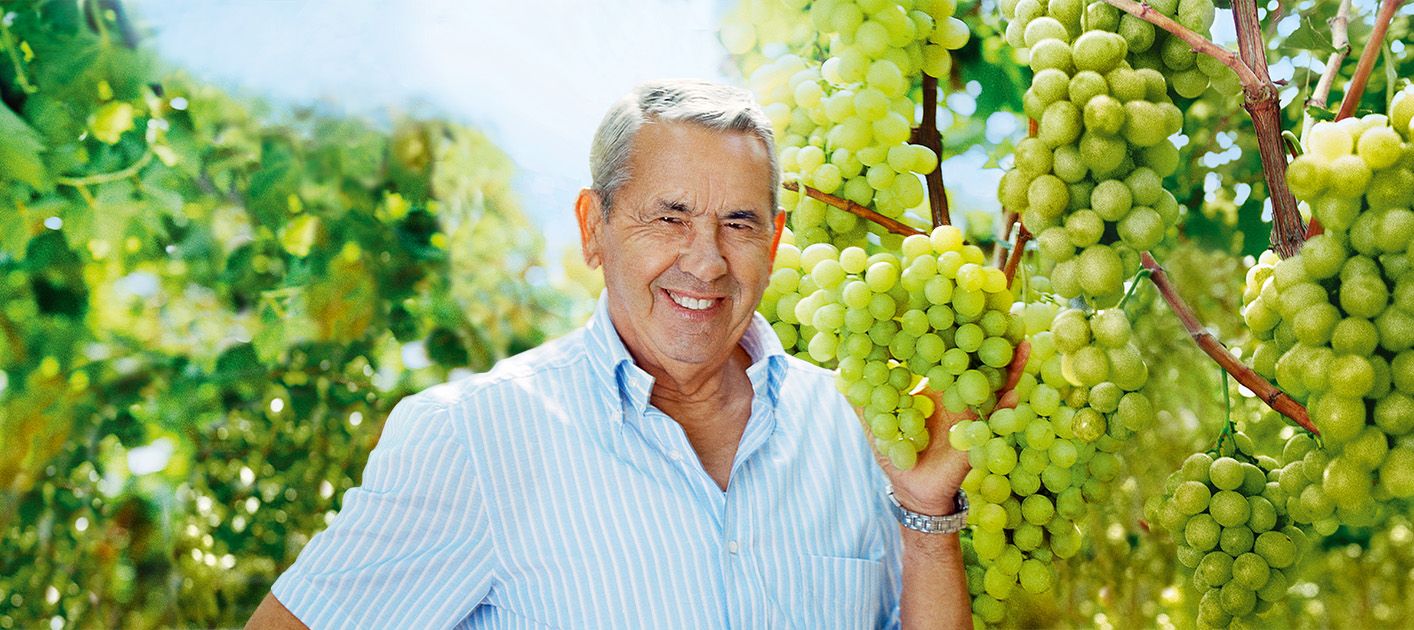
Schau, wie süß.
This is how the sweet life tastes.
“This truly is the pure sweet life,” says Antonio Giuliano as he nibbles on a grape. Here in Apulia, on the vast fields of the renowned Giuliano family, nature treats the grapes exceptionally well.
For over 40 years, the most delicious white, red, and blue varieties have thrived here.
The family’s variety of grapes is legendary. Whether white, red, or dark, with seeds or seedless—there’s a suitable variety for every taste. To ensure even more sunlight reaches the fruits, the clusters per plant are reduced, allowing them to grow robustly.
The Giuliano’s fruits ripen for two to three weeks longer than usual. Naturally, pests are tackled primarily with natural predators.
With so much experience and dedication, the family’s grapes are wonderfully juicy-sweet and crunchy. Antonio can be proud of his work and that of his brothers: “The grapes growing here are a sweet greeting from Mother Nature—and, of course, from our family.”

Good to know
Always keep grapes well cooled and in a closed container.
More interesting factsabout grapes
Country of origin
SanLucar’s particularly flavorful varieties grow and thrive best in the sunny mild climate of the Mediterranean region, but also in Chile, Brazil, South Africa, India and Peru, for example.
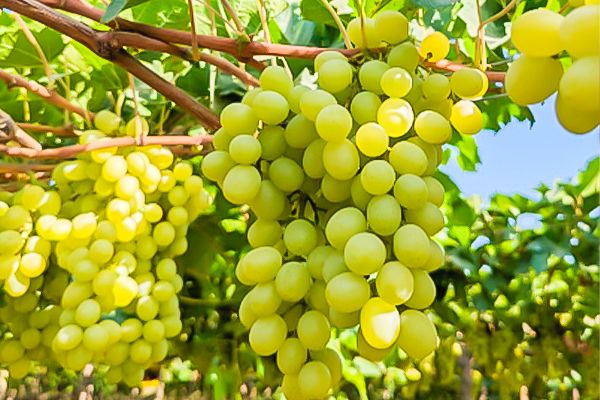
Storage
Grapes should be stored in a closed container in the refrigerator because they tend to take on foreign flavors.
History
The grape is probably one of the first cultivated plants used by man. Its origin lies in the areas of the Caucasus to the Caspian Sea and is dated to about 6000 BC. Around 2000 BC, the Egyptians and Phoenicians brought the grapes to Greece.
Tips and special features
They taste best when well chilled and crisp. Connoisseurs therefore like to enjoy them right from a water bath with ice cubes.
Nutritional information
| Vitamin B (mg/100g) | 0.8 mg |
| Vitamin C (mg/100 g) | 4.2 mg |
| Vitamin E (mg/100 g) | 1.3 mg |
| Potassium (mg/100 g) | 198 mg |
| Calcium (mg/100 g) | 12 mg |
| Calorific values: Energy | 70 kcal |
| Fett thereof |
0.3 g |
| Saturated fatty acids | 0.1 g |
| Monounsaturated fatty acids | |
| Polyunsaturated fatty acids | |
| Carbonhydrates | 15.2 g |
| of which sugar | 15.1 g |
| Protein | 0.7 g |
| © German Food Code 3.02 |

Taste in harmony with people and nature
We use our modern, digitally controlled water management system to save water, always rely on natural predators first when dealing with pests and protect the bees.
More about our social responsibility


